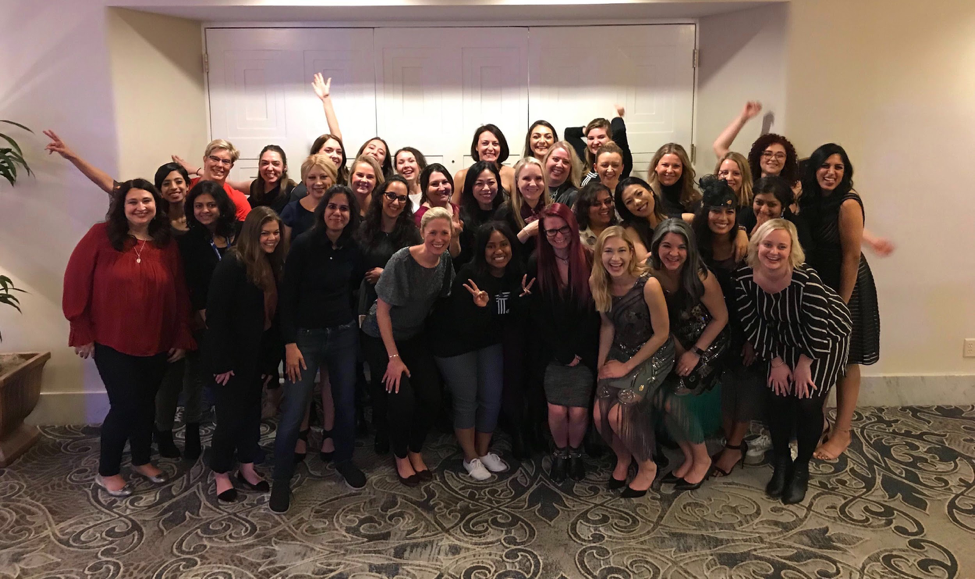Balance for Better: Why Diversity & Inclusion Improve Business for Everyone
International Women’s Day dates back to 1911. For over a hundred years, the day has had a singular mission of “celebrating the social, economic, cultural and political achievements of women - while also marking a call to action for accelerating gender balance.”
Despite Progress, Gaps Still Exist
Last year the hashtag #PressforProgress was the most talked about topic on social media. But the social buzz wasn’t just online chatter; it translated to some demonstrable progress. The UK introduced mandatory gender pay gap reporting, Saudi Arabia made it legal for women to drive, Adobe achieved equal pay globally.
And while that’s great progress, major gaps exist worldwide that still need to be closed. Women hold just 24% of seats in parliaments, lead only 13 of 195 countries, hold just 15% of board seats worldwide, and were awarded only 15% percent of scientific awards.
Going Beyond Gender Equality
These data points illustrate how much further we have to go to make the world more inclusive for women. But that’s only part of the picture. From just three black CEOs in the Fortune 500 to only ten LGBT members of the 116th Congress, it’s clear the issues of diversity extend far beyond just gender.
So it seems fitting that the theme for International Women’s Day in 2019 is Balance for Better. Balance for Better conjures a much broader vision than just gender equality. Balance is not just a women’s issue. At the individual level, everyone faces issues of balancing work, life, health, and family. At an organizational level, balance is essential for organizations to thrive; according to a recent study from Boston Consulting Group, companies with above average levels of diversity on their management teams reported 19% points higher revenue than their peers.
“Because of our diverse workforce, we’ve experienced a boost in productivity. When you can move people to contribute to their fullest, it has a tremendous impact,” noted Rosalind Hudnell, director of global diversity and inclusion at chip maker Intel.
Walking the Walk
I’m proud to be part of ThoughtSpot – a company that not only thinks of diversity on a broad spectrum, but considers it a critical issue at every level of the organization. A Forbes study on Diversity and Inclusion shared that for a company to truly embrace diversity, the C-suite must be completely on board. As a leadership team, we adhere to this thinking wholeheartedly. We are very deliberate about building a culture focused on #BalanceforBetter, where everyone feels seen, heard, and most importantly, valued.
And this isn’t just because it feels like the right thing to do. The leadership team at Thoughtspot recognizes that a diverse and inclusive workforce ultimately drives innovation. Multiple voices lead to new ideas, encourage out-of-the box thinking, and create new opportunities. ThoughtSpot’s mission is to “create a more fact-driven world for every human.” This mission itself demands inclusion - reaching every human is only possible through a variety of perspectives, approaches, and ideas.
Internally ThoughtSpot has developed a women’s group to provide a forum for women to share experiences. We come together to not only build strong and meaningful relationships, but provide a perspective to the broader leadership team on diversity topics that might be otherwise overlooked.

We are focused on developing a “Thoughtful Speakers” series that provides ThoughtSpot employees with a unique perspective on a topic that might not be otherwise discussed every day. Most importantly we encourage everyone at ThoughtSpot to take an active role in developing and maintaining our culture and encourage “selfless excellence” in everything we do, including building an inclusive organization.
So while the buck may stop with the C-Suite, I believe International Women’s Day provides an opportunity for everyone to reflect on the role they play in creating a more inclusive and diverse world.
I leave you with one question: how can you use your voice to empower others?








